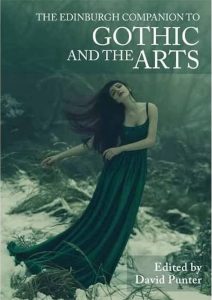2019
 Installation art is always simultaneously material and ephemeral, comprised of tangible objects but also of light, sound, or air. Its existence is always temporary; it is overshadowed by its own death, ready to be dismantled and moved to the afterlife of a photographic or video record. In this sense, it exists predominantly as its own memory. This semi-spectral nature of installation art, seen as a temporary assemblage of parts always on a verge of collapse and disintegration, makes it particularly open to Gothic influences realised trough a choice of themes or conceptualisation of time and space. Although Gothic has never been specifically defined in the context of art, the visual nature of the Gothic aesthetics makes the two compatible. This chapter highlights the work of several twentieth and twenty-first century artists to examine different ways installation art engages with the Gothic. The discussion focuses on the formal qualities of Gothic installations, particularly the construction of Gothic objects and bodies through the use of forms and media that can be seen as impure or abject, and the way these installations evoke the fragmented, oppressive, and disassociated spaces of Gothic and embrace the temporality directed towards memory, history, impermanence, death, and haunting.
Installation art is always simultaneously material and ephemeral, comprised of tangible objects but also of light, sound, or air. Its existence is always temporary; it is overshadowed by its own death, ready to be dismantled and moved to the afterlife of a photographic or video record. In this sense, it exists predominantly as its own memory. This semi-spectral nature of installation art, seen as a temporary assemblage of parts always on a verge of collapse and disintegration, makes it particularly open to Gothic influences realised trough a choice of themes or conceptualisation of time and space. Although Gothic has never been specifically defined in the context of art, the visual nature of the Gothic aesthetics makes the two compatible. This chapter highlights the work of several twentieth and twenty-first century artists to examine different ways installation art engages with the Gothic. The discussion focuses on the formal qualities of Gothic installations, particularly the construction of Gothic objects and bodies through the use of forms and media that can be seen as impure or abject, and the way these installations evoke the fragmented, oppressive, and disassociated spaces of Gothic and embrace the temporality directed towards memory, history, impermanence, death, and haunting.
